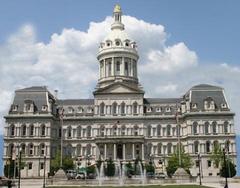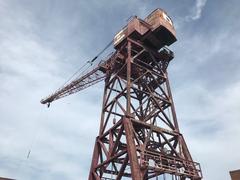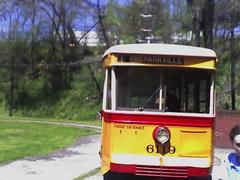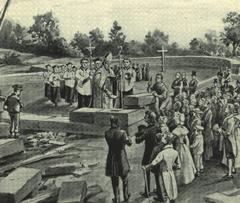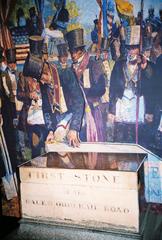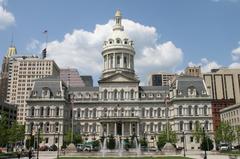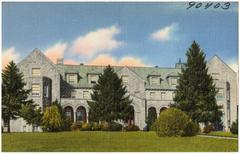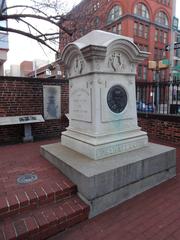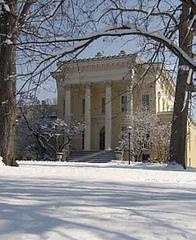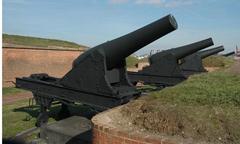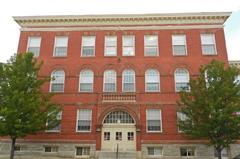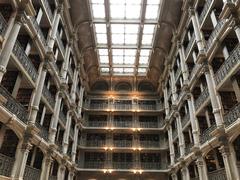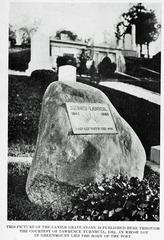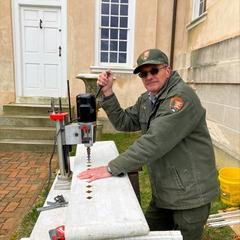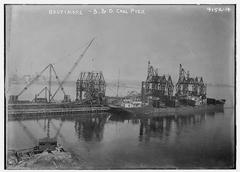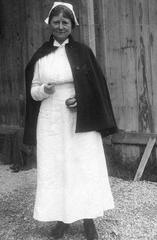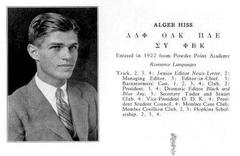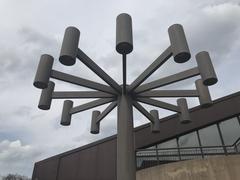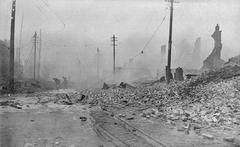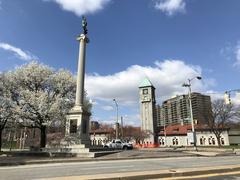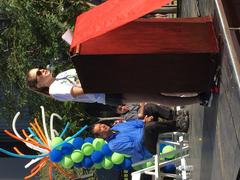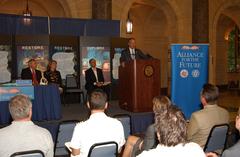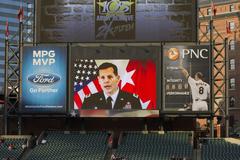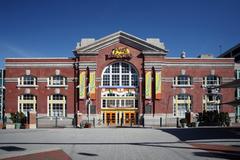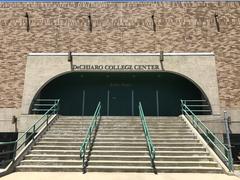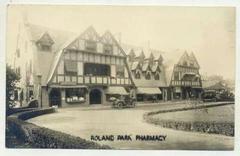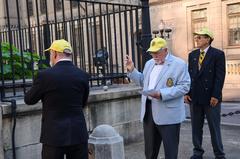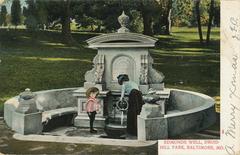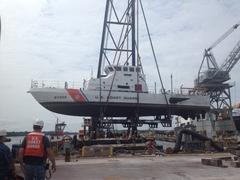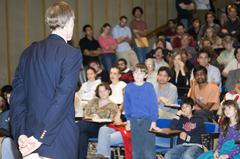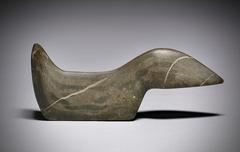Mercy Medical Center (Baltimore, Maryland)
Mercy Medical Center Baltimore Visiting Hours, Visitor Information, and Travel Guide
Date: 03/07/2025
Introduction: Mercy Medical Center’s Legacy and Urban Significance
Mercy Medical Center, located at 345 Saint Paul Place in Baltimore, Maryland, is a cornerstone of the city’s healthcare landscape and a symbol of enduring community service. Established in 1874 by the Sisters of Mercy, the hospital has evolved from a small infirmary into a state-of-the-art medical campus while preserving its tradition of compassionate care. Today, Mercy Medical Center is not only a leading healthcare institution but also a cultural and architectural landmark woven into Baltimore’s urban fabric.
This guide provides a comprehensive overview for prospective visitors, including the center’s history, visiting hours, accessibility, travel logistics, campus features, and recommendations for exploring nearby attractions. Whether you are visiting a patient, attending a special event, or exploring Baltimore’s historical districts, this resource will help ensure an informative and meaningful experience.
For the latest updates and specific details, always refer to the official Mercy Medical Center website and the Mary Catherine Bunting Center project profile.
Table of Contents
- Introduction
- History of Mercy Medical Center
- Cultural and Community Impact
- Visiting Hours and Admission
- Directions, Parking, and Transportation
- Accessibility Features
- Campus Navigation and Visitor Amenities
- Nearby Attractions
- Visitor Tips and Photography
- Guided Tours and Special Events
- Frequently Asked Questions (FAQ)
- Conclusion
- References
History of Mercy Medical Center
Founded in 1874 by the Sisters of Mercy, Mercy Medical Center has played an integral role in Baltimore’s healthcare and social development. Over nearly 150 years, the institution has grown from its original site at Baltimore City Hospital to a modern medical center, adapting to advances in medicine while retaining its mission of service and compassion. Architecturally, the campus showcases a blend of historical and contemporary design, highlighted by the 18-story Mary Catherine Bunting Center, a hallmark of both patient care and urban renewal.
Cultural and Community Impact
Mercy Medical Center’s legacy extends beyond healthcare delivery. Rooted in Catholic values and the founding principles of the Sisters of Mercy, the center remains deeply engaged in community outreach, spiritual care, and public health initiatives. Its chapels and meditation spaces foster a sense of healing and reflection, while occasional guided tours and educational programs connect visitors with Baltimore’s rich history and Mercy’s enduring role in the city.
Visiting Hours and Admission
- Visiting Hours: Patient room visiting hours are generally from 9:00 AM to 9:00 PM daily. Department-specific hours or temporary restrictions may apply; always confirm with the relevant unit before your visit.
- Main Entrance: The Saint Paul Place entrance is open 24/7 for patient arrivals and visitor access.
- Admission: Entry to public areas—including the lobby, chapels, and rooftop gardens—is free of charge. No tickets are required for general visitation.
For real-time updates and any special protocols, consult the official Mercy Medical Center website.
Directions, Parking, and Transportation
Mercy Medical Center is centrally positioned in downtown Baltimore and is easily accessible:
- By Car: On-site parking garages are available with hourly and daily rates. Valet services may be offered; check the hospital’s site for current details.
- Public Transit: The hospital is served by several Maryland Transit Administration (MTA) bus routes and is within walking distance of Baltimore Metro Subway stops.
- Ride-Sharing/Taxi: Dedicated drop-off and pick-up zones are located at the main entrance for convenience.
For detailed transit routes and parking rates, see the Maryland Transit Administration and Mercy’s official parking information.
Accessibility Features
Mercy Medical Center is committed to providing accessible facilities for all visitors:
- Entrances and Pathways: Wheelchair-accessible entrances and wide corridors throughout the campus.
- Elevators: All main buildings, including the Mary Catherine Bunting Center, include elevators with access to upper floors and rooftop gardens.
- Restrooms: Accessible restrooms are located on all public floors.
- Assistance: Visitor services provide wheelchairs and support upon request. Contact the information desk for assistance.
Campus Navigation and Visitor Amenities
The Mercy campus is organized around the Mary Catherine Bunting Center, featuring:
- Rooftop Meditation Gardens: Located on the 8th, 9th, and 10th floors, these gardens offer tranquil settings and panoramic city views.
- Landmark Plaza: A welcoming public space and primary entry point.
- Chapel and Meditation Rooms: Open to visitors for prayer and quiet reflection.
- Information Desks: Staffed to assist with directions, facility inquiries, and accessibility support.
- On-site Dining: Cafeterias and cafes are available for visitors and staff.
Nearby Attractions
Mercy Medical Center’s location places visitors within walking distance of several notable Baltimore sites:
- Inner Harbor: A bustling area with shops, restaurants, and museums.
- Walters Art Museum: Renowned for its diverse collections.
- National Aquarium: A top family-friendly destination.
- Mount Vernon District: Home to historic architecture, the Washington Monument, and cultural venues.
For those wishing to explore more, the Baltimore Heritage website offers guides to local landmarks and events.
Visitor Tips and Photography Guidelines
- Photography: Permitted in public spaces such as lobbies, rooftop gardens, and exterior campus areas. Photography is strictly prohibited in patient rooms and clinical areas to protect privacy.
- Footwear: Wear comfortable shoes, as the campus covers multiple levels and buildings.
- Weather: Some public spaces, including rooftop gardens, are outdoors—plan accordingly.
- Children: Welcomed during visiting hours, though some patient units may have additional guidelines.
Guided Tours and Special Events
- Guided Tours: Not routinely available, but may be offered during special events or anniversary celebrations. Contact the community relations office for details.
- Special Events: In 2024, Mercy Medical Center is hosting commemorative programs for its 150th anniversary, including lectures, community health fairs, and historical exhibitions.
Stay informed about upcoming events via mdmercy.com.
Frequently Asked Questions (FAQ)
Q: What are the standard visiting hours?
A: Typically 9:00 AM to 9:00 PM, but verify with specific units or check the official website for updates.
Q: Is the campus wheelchair accessible?
A: Yes, including entrances, elevators, restrooms, and gardens.
Q: Are children allowed to visit?
A: Yes, though unit-specific guidelines may apply.
Q: Are there on-site dining options?
A: Yes, cafeterias and cafes are available for visitors and staff.
Q: Is photography permitted?
A: In public areas only; prohibited in patient and clinical spaces.
Q: How can I arrange a guided tour?
A: Contact the hospital’s community relations office for information about special tours or events.
Conclusion
A visit to Mercy Medical Center is more than a trip to a premier healthcare facility—it is an encounter with nearly 150 years of Baltimore’s history, community values, and architectural innovation. The center’s accessible amenities, thoughtful visitor services, and proximity to major city attractions make it both a practical and enriching destination. Whether you’re supporting a loved one, attending a commemorative event, or exploring Baltimore’s heritage, Mercy Medical Center invites you to experience its legacy of healing and service.
For the most current visitor information, always consult the Mercy Medical Center official website. Enhance your visit with interactive navigation and cultural insights by downloading the Audiala app.

